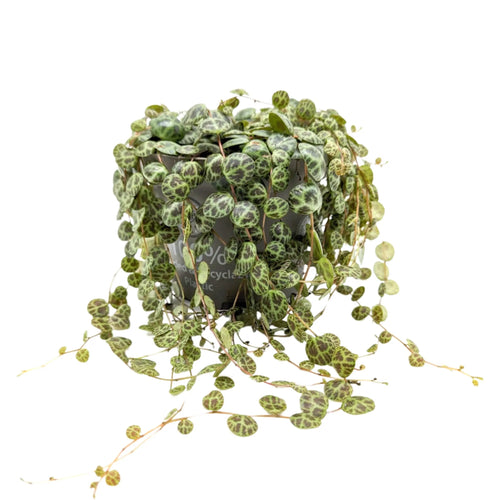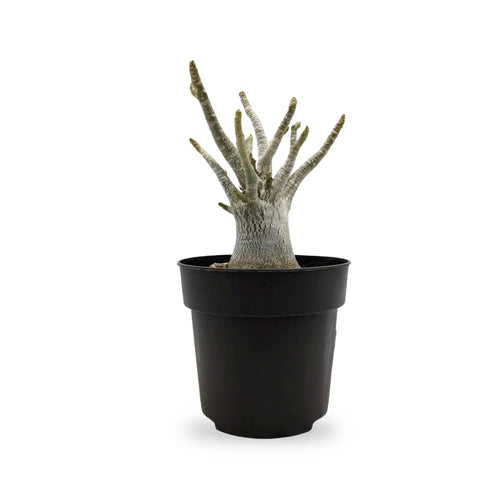Allergies may make daily life uncomfortable, but that doesn't mean you have to miss out on the joy of bringing nature indoors. Thankfully, not all houseplants aggravate allergies—many actually help purify your home’s air and trap dust particles. With careful plant selection and minimal maintenance, you can enjoy greenery in your home without the sneezing and watery eyes.
Whether you suffer from pollen sensitivities or seasonal allergies, choosing low-allergen indoor plants is a great way to enjoy a cleaner, healthier environment. Let’s explore which houseplants are best for sensitive homes and how to care for them.
Plants and Allergies: What You Should Know
If you have allergies, you may worry that bringing plants indoors will make symptoms worse. And while it’s true that certain plants release airborne pollen that can trigger allergic reactions, many indoor-friendly species are practically pollen-free.
The key is choosing non-flowering or rarely flowering varieties and avoiding those that release pollen into the air. Confined indoor spaces can trap pollen, making symptoms more severe, so plant selection matters even more indoors than it does outdoors.
In addition to choosing the right plants, improving air circulation and dusting leaves can make a huge difference. Proper ventilation helps reduce the build-up of allergens in the air, and plants themselves can help capture dust, pet dander, and even mold spores—making your home a more comfortable place to breathe.
Before Blaming Your Plants
It’s important to remember that not all allergy symptoms are caused by plants. Indoor allergens like dust mites, pet dander, and mold spores are far more common culprits. These allergens can accumulate in carpets, furniture, curtains, and even in HVAC systems.
Low-allergen houseplants can help by catching these particles on their leaves. When you clean the leaves regularly with a damp cloth, you're also removing trapped allergens from your space. So before pointing the finger at your plant collection, consider checking your living environment for other hidden triggers.
Top Low-Allergen Houseplants
If you’re looking to introduce greenery into your home without worsening allergies, here are some of the best options to consider:
1. Snake Plant (Sansevieria)
The Snake Plant is one of the top choices for allergy sufferers. Its stiff, upright leaves do not produce airborne pollen, and the plant rarely flowers indoors. It's also known for its air-purifying qualities and ability to trap dust particles.
Care Tips:
Thrives in low to bright indirect light.
Allow soil to dry out between waterings.
Wipe the leaves regularly to remove dust.

2. Philodendron
Philodendrons are both beautiful and functional. Their broad leaves act like dust magnets, improving indoor air quality. Since they do not produce pollen and rarely flower indoors, they’re an excellent choice for sensitive households.
Care Tips:
Place in bright, indirect light.
Water when the top inch of soil is dry.
Clean leaves gently with a damp cloth.

3. Pothos (Epipremnum aureum)
Known for their trailing vines and low maintenance, Pothos plants are ideal for allergy-conscious homes. They don’t produce allergenic pollen and are effective at removing toxins from the air.
Care Tips:
Adaptable to low and bright light conditions.
Water when the topsoil dries out.
Trim vines as needed to control growth.

4. ZZ Plant (Zamioculcas zamiifolia)
The ZZ Plant features thick, glossy leaves that naturally resist dust and rarely flower indoors. It’s a great plant for beginners and those with allergies alike.
Care Tips:
Tolerates low light and infrequent watering.
Allow soil to dry out completely before watering again.
Dust leaves regularly to enhance air purification.

5. Chinese Evergreen (Aglaonema)
The Chinese Evergreen is another allergy-friendly houseplant with large leaves perfect for trapping airborne irritants. It also requires minimal care, making it great for bedrooms or low-light areas.
Care Tips:
Prefers indirect light but tolerates low light.
Keep soil slightly moist, watering when the top layer dries.
Choose a well-draining pot to prevent root rot.

7. Cast Iron Plant (Aspidistra elatior)
True to its name, the Cast Iron Plant is tough, low-maintenance, and great for allergy-prone spaces. It rarely flowers indoors and does not emit pollen into the air.
Care Tips:
Tolerates low light and infrequent watering.
Ideal for darker rooms like hallways or offices.
Clean wide leaves with a damp cloth to improve air quality.

Tips for Choosing Allergy-Friendly Plants
1. Size and Placement
Consider the space where your plant will live. Smaller plants like Snake Plants or Chinese Evergreens fit well on desks or windowsills. If you’re looking for something larger, the ZZ Plant or Cast Iron Plant can fill empty corners with style and substance. Trailing plants like Pothos work well on shelves or in hanging pots for vertical interest.
2. Lighting Needs
Matching the plant’s light requirements with the lighting available in your space is key. South-facing windows provide ample light for sun-loving plants like Ponytail Palms. For rooms with limited natural light, opt for hardy choices like the ZZ Plant or Snake Plant, which tolerate dim conditions.
3. Growth Habits and Visual Appeal
Different plants offer different looks. Philodendrons and Pothos add lush, green volume with their vines. Snake Plants grow upright and sculptural, while Chinese Evergreens offer compact, colorful foliage. Choose based on how the plant’s structure complements your interior decor.
Caring for Low-Allergen Plants
To maintain a low-allergen environment, proper plant care is essential:
Dust Regularly: Use a damp microfiber cloth to gently clean the leaves. This removes allergens like dust and dander and helps the plant photosynthesize more efficiently.
Avoid Overwatering: Excess moisture can lead to mold growth, both in soil and surrounding areas. Always check soil moisture before watering.
Limit Fertilizers: Use organic, low-odor plant food to avoid irritating sensitive noses.
Repot Occasionally: As your plant grows, repotting helps it stay healthy and reduces the risk of mold buildup in compacted soil.
Conclusion: Breathe Easy with the Right Plants
Houseplants can absolutely be a part of your home, even if you suffer from allergies. By selecting non-flowering, low-pollen species and maintaining a clean, well-ventilated environment, you can enjoy the beauty and health benefits of indoor plants without triggering allergy symptoms.
From the sturdy Snake Plant to the lush Philodendron, these low-allergen options help you green up your space without discomfort. With minimal effort, they offer natural air purification and aesthetic appeal—perfect for any home striving to be both beautiful and breathable.










